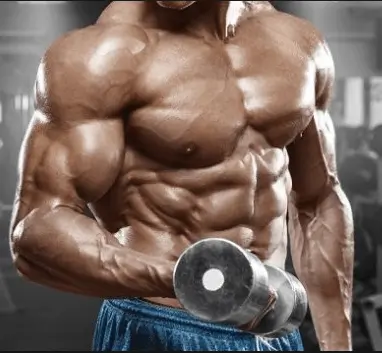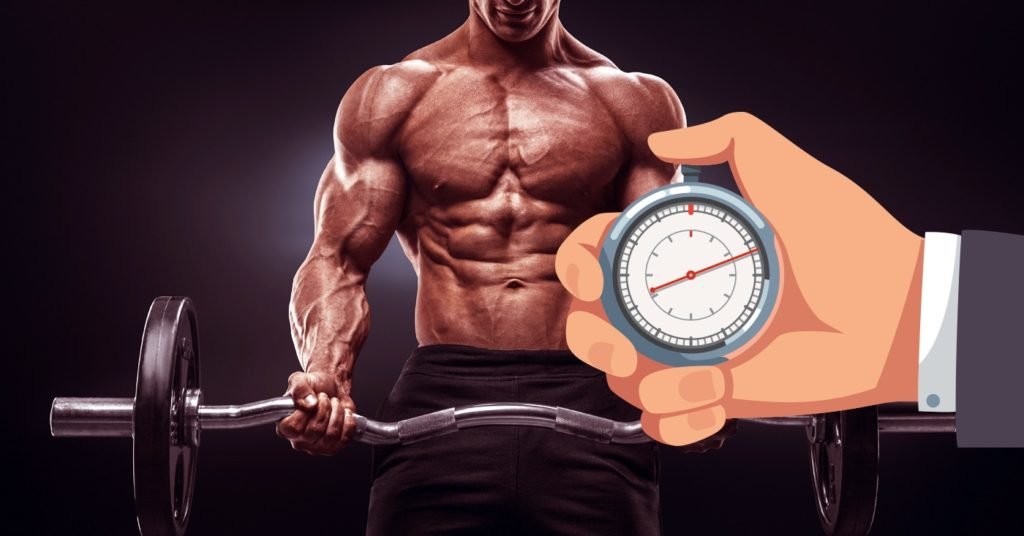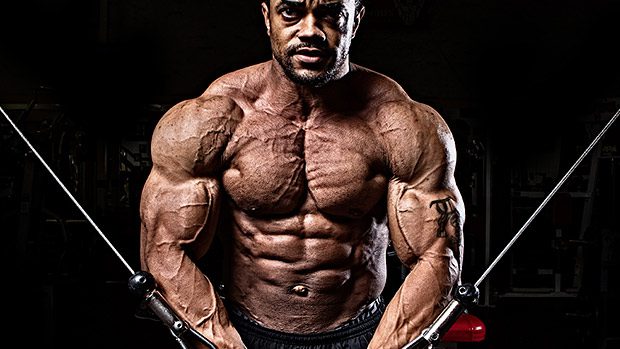Hypertrophy Strength Training for Size, Time Under Tension and Slow Eccentrics

hypertrophy strength training
So that last post was a very in depth look at how you train for pure strength ( Hypertrophy Training for Power, Functional Strength With High Weight).
Now it’s time to look at how you train for maximum size. What do you need to do to grow above all else?
The answer, as we’ve seen, lies with time under tension. The more more time you spend under tension, the more you allow those all important metabolites to build up and the more you’re going to grow.
This is what will result in the slightly softer, slightly more ‘bloated’ muscle that you associate with a bodybuilder versus the rock hard, but slightly thinner muscle of a martial artist which is just full of fast-twitch fiber and under tight mental control.
Now here’s the myth that we want to dispel right away: bodybuilding muscle is not ‘fake’ muscle. And bodybuilding muscle is in no way ‘less functional’ than power building muscle.
Remember: this simply comes down to SAID. Yes, power builders are stronger than bodybuilders when it comes to 1RM. But a bodybuilder conversely will normally have great muscle endurance.
That means they’ll be better at continuing to exert force over a longer time i.e. over more repetitions of the same exercise. And this is in no way less important or less impressive than being able to generate explosive force in the short term.

Think about it: in the real world, are you more likely to need to lift something very heavy just once, or are you more likely to need to lift something moderately heavy over and over again?
For most of us, the answer is definitely the latter and this is what bodybuilding muscle provides you with by giving you more glycogen in the muscle.

Time Under Tension – hypertrophy strength training
hypertrophy strength training
So the objective here is to challenge the muscle to continue to exert itself to the point where it starts to fail from both muscle damage and a build up of lactic acid (which is a byproduct of the glycogen muscle system).
To really increase time under tension though, we’re not only interested in curling weights for longer sets, we’re also interested in manipulating our technique such that it will increase the time we spend contracting.
This means, for instance, that you’ll be curling the weight without ever quite putting it completely down. You’ll be stopping just short of fully locking out the arm and you’ll be stopping just short of moving the weight all the weight to the top.
Another way to increase time under tension is simply to slow down your repetitions. By slowing the repetitions down more, you spend more time contracting and you also force better technique, more concentration and great muscle fiber recruitment.
Note that this type of weight lifting still needs to create muscle damage. You still need to progress and that means you’re still aiming to create some microtears.
This is where elaborate intensity techniques come in, which involve doing things like curling or pressing very heavy weight, only to then drop immediately to a slightly lower weight (drop set).

Isolation Exercise – hypertrophy strength training
hypertrophy strength training
While pure powerlifters will always prefer compound movements, bodybuilders will be much more likely to incorporate isolation movements into their hypertrophy strength training.
Of course an isolation movement is the opposite of a compound movement. Whereas compound movements involve lifting weights using multiple muscle groups and lots of coordination, isolation movements involve focussing on just the one muscle and making sure not to involve any other muscles at all.
So a bodybuilder will be much more likely to use a bicep curl versus a powerlifter. And the reason for this is that a curl is a ‘single joint exercise’.
This only involves one joint in the body and that in turn means that you aren’t having to coordinate lots of different muscle groups at once.
But what it also means is that you can really focus on just that one muscle, you can actually cause more microtears and you can build up more me tabolites in that one area.
The problem with using lots of muscles in unison, is that you won’t actually be focussing on any one group. When you deadlift, you are using your calves, your hamstrings, your glutes, your quads, your core, your erector spinae, your traps, your forearms, your shoulders and your lats.
As soon as the combined strength your muscles are capable of generating meets its limit, you’ll not be able to perform any more repetitions. Often it ends up being the forearms that let the team down!
Conversely, with a curl, you are pretty much only focussing on the biceps. That means you can keep going until the biceps give up.
What’s more, is that you can much more safely keep pushing yourself when you’re using an isolation movement. With a squat, piling on more and more weight and performing more and more repetitions will eventually cause your form to suffer as key muscles start to struggle.
If you keep going beyond that point, you can then injure your back or your knee. With a single joint exercise on the other hand, you can keep going until the weight literally drops out of your hand. That means you can train for much more muscle damage and much more metabolic stress in that specific region.
The way a bodybuilder will often train then, is to use isolation exercises that repeatedly focus on the same muscle and repeatedly fatigue it.
They cause so much muscle damage and metabolic stress that it takes several days for the muscles to recover and become useable again but in the meantime they’ll focus on training other body parts on different days.

Negatives and Eccentric Isometrics – hypertrophy strength training
hypertrophy strength training
Bodybuilders that are purely interested in size do have something in common with powerlifters though that being their love of the fast twitch muscle fiber.
This is because fast twitch muscle fiber just so happens to be thicker and therefore larger looking than slow twitch muscle fiber (which is why endurance athletes tend to look very lean).
A bodybuilder looking to build strength then would be interested in causing muscle damage to the fast twitch fiber, which is why they still need to use weights that are in their 8–10 rep max, rather than curling for 20 or 30 repetitions.
This is also why a bodybuilder might place more emphasis on the eccentric portions of their movements. So what is that? It’s essentially the aim to create more muscle tears, without necessarily having to lift massive weights for just a few repetitions.
Muscle fiber just so happens to be strongest in the negative, eccentric portion of the movement. That means it is stronger when the muscle is contracting, meaning that you can hold a heavier weight than you can lift.
Thus, when you lift a heavy weight and lower it very slowly, you will be able to cause more damage to the fast twitch muscle fiber.
Many bodybuilders then incorporate ‘eccentric isometrics’ (or ‘quasi–isometrics’) by very slowly lowering the weight for the count of 2–7 seconds. This also increases time under tension in the most efficient way and in general can stimulate a lot of growth.
This is another reason bodybuilders will use lighter weights because it allows them to use more controlled technique like this and thereby trigger more tears, more damage and more growth.
hypertrophy strength training
